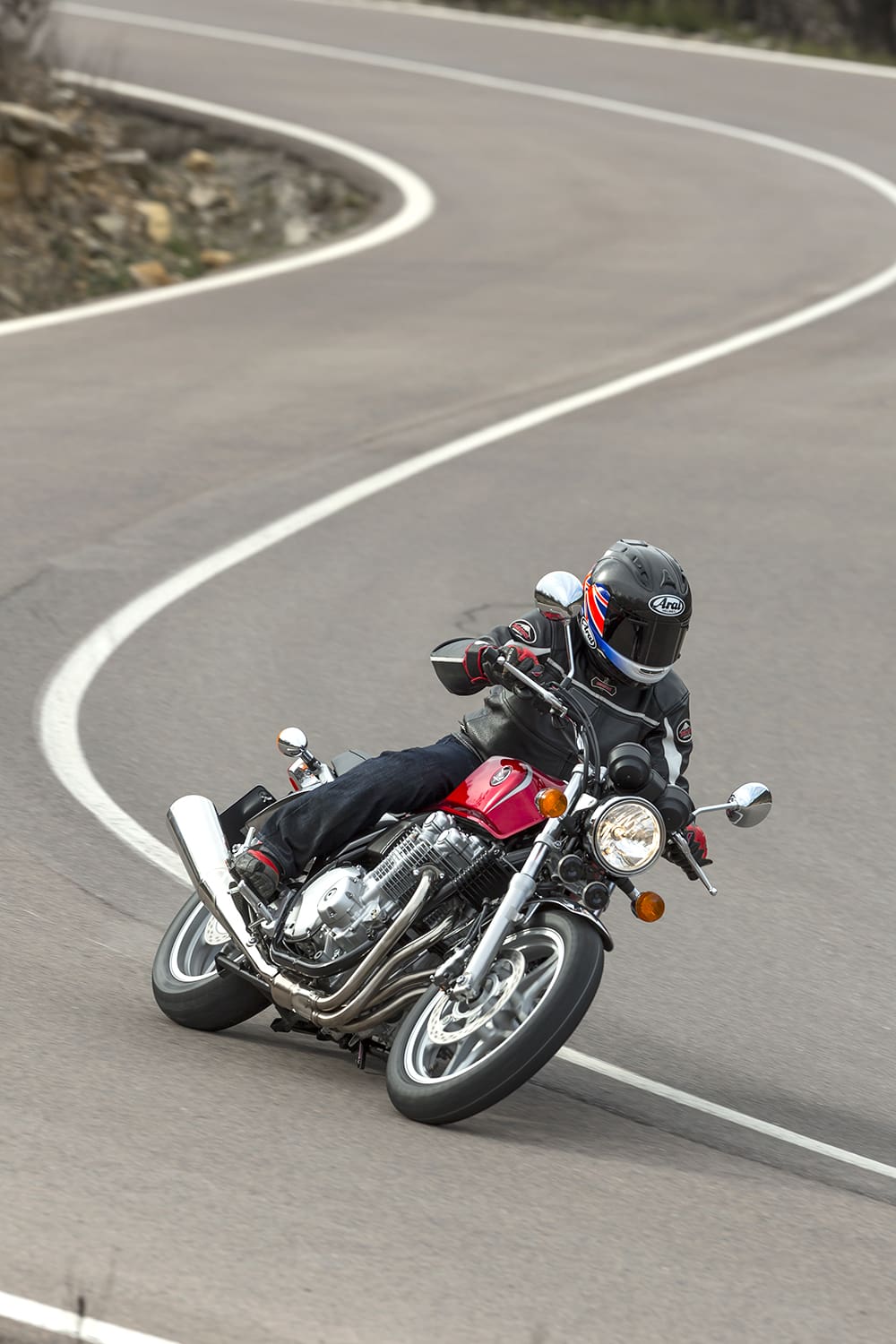Done right, retro isn’t just cool but can also be very profitable. But if you don’t score a bullseye in capturing the spirit of the past in a modern context, then a trip down memory lane can be expensive.
Apart from its overall period architecture, the CB1100 is littered with styling cues straight out of the 1970s: the chromed mudguards, the twin green-faced analogue dials, and a tail light that surely came out of the CB750 parts bin. There’s an old-style centrestand as standard, and what is unquestionably the best and safest flick-out sidestand I ever used on any motorcycle.
The flat dual seat comes with a traditional-style pillion strap across the middle and the Honda name on the back, and at just 795mm high is not only relatively low but also quite thinly padded, all just like back then. It’s easy to hop on and off the bike, and it’s relatively narrow at the front, which will suit shorter riders.
Just like in the olden days, an alternator hangs off the left end of the crank, and top power of 89bhp (66kW) at 7500rpm is delivered to the rear wheel through a five-speed gearbox, with maximum torque of 93Nm peaking at just 5000rpm.

But in spite of this retro overall design, the CB1100 carries a modern gear-driven counterbalancer to remove the tingles in your fingers that were one of the rites of passage in revving one of the early Honda fours hard, when riding it in something approaching anger. It’s also fitted with PGM-FI electronic fuel injection and a quartet of 32mm throttle bodies, which is ideally mapped to let it drive wide open in
top gear from just 1500rpm.
A strong, flat torque curve makes the Honda so easy to ride. You’ll find yourself keeping the engine between 3500-7500rpm on the dial for maximum enjoyment, because there isn’t a lot of grunt low down – just as it was with all fours back then. But there’s a clean, linear build of power from down low, until the tacho needle hits the 6500rpm mark, when there’s a really noticeable kick of extra power as engine speed surges faster
Thankfully the brakes on the CB1100 are nothing like original CB750’s single front disc, and the twin 296mm Nissin discs and four-piston calipers deliver good feel as well as effective braking power via just a light squeeze on the adjustable lever. ABS is standard in most countries the bike will be sold in, and will help prevent overcoming the skinny front tyre through too hard a squeeze.
The only real downside to the Honda in terms of practicality is its small 14.6-litre fuel tank, which with a 6.5L/100km consumption for our 150km trip, would only have given a range of 225km. Still, most people will use this bike for shorter daily commutes or Sunday morning runs, so probably that’s not an issue. Stopping more often helps you rub some circulation back into your bum that the hardish seat has affected, anyway!

TEST Alan cathcart PHOTOGRAPHY FRANCESC MONTERO, ZEP GORI, FÉLIX ROMERO & ULA SERRA